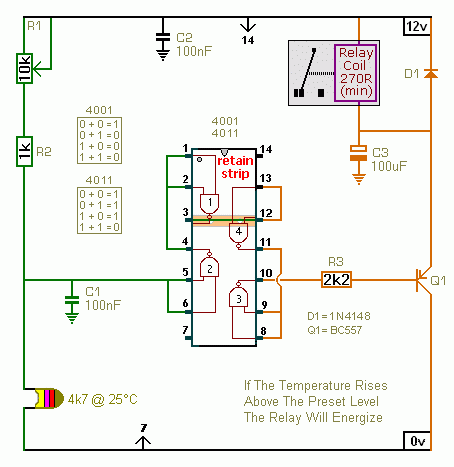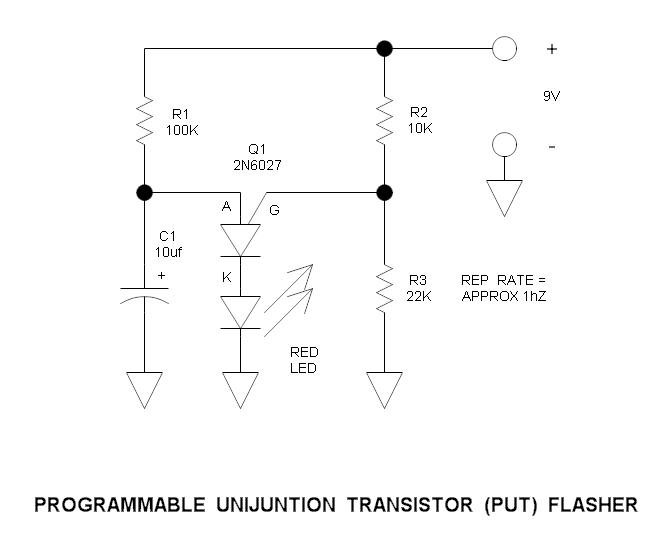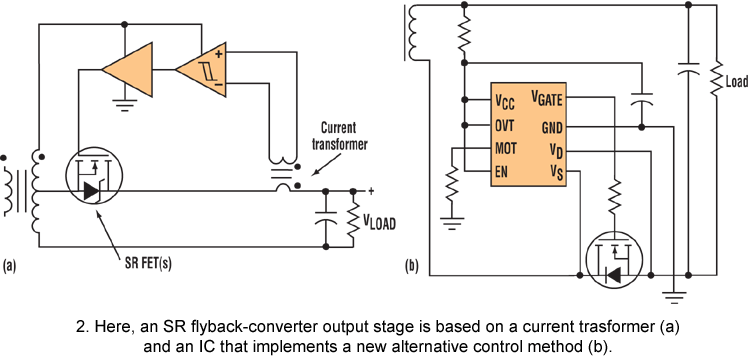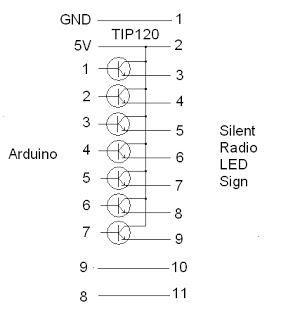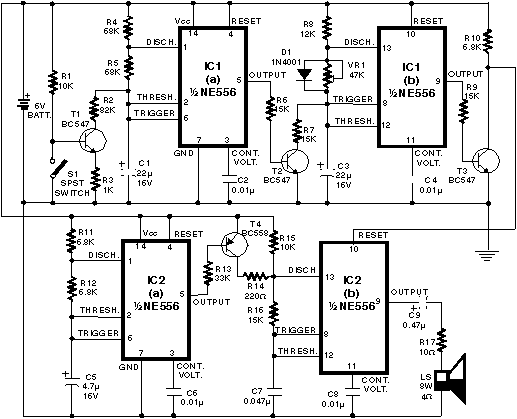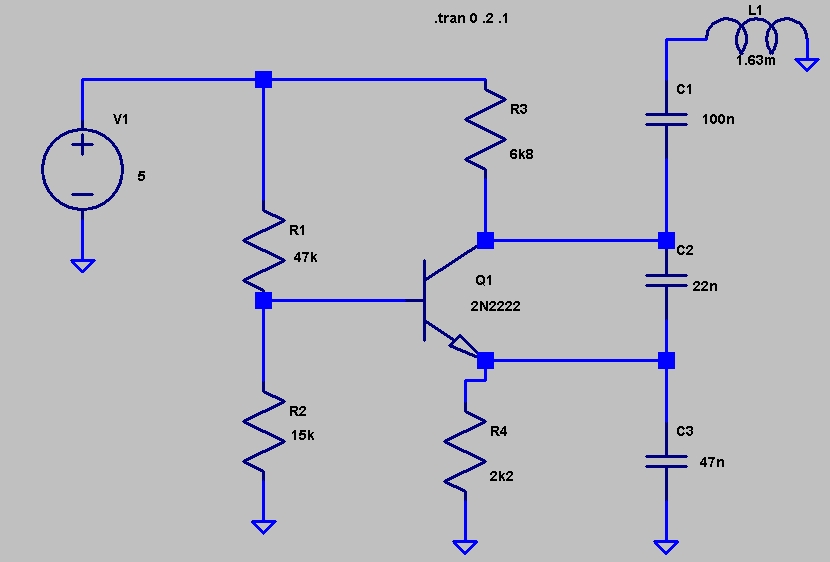
4011 dual led flasher
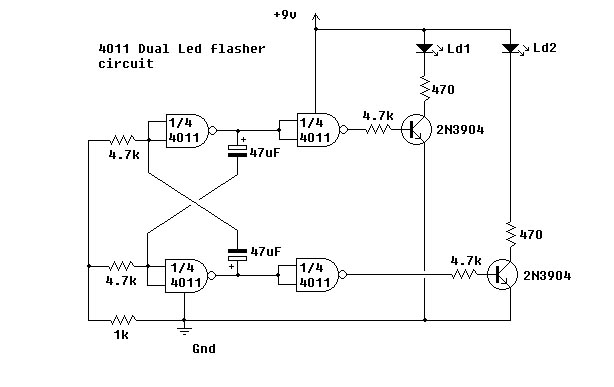
This simple circuit utilizes NAND gates to alternately flash two LEDs. The two 47µF capacitors set the flashing frequency. It is advisable to include a decoupling capacitor across the power supply. The circuit was constructed using the specified components and functioned correctly. The integrated circuit used is the 4011 Quad.
The circuit design employs a 4011 Quad NAND gate integrated circuit, which contains four independent NAND gates. The configuration is designed to create a bistable multivibrator or flip-flop arrangement that alternates the state of two LEDs, resulting in a blinking effect. The two 47µF capacitors are pivotal in determining the timing characteristics of the circuit. These capacitors, in conjunction with the resistors (not specified in the description but typically included in such circuits), establish the charge and discharge cycles that control the frequency of the LED flashing.
A decoupling capacitor should be placed across the power supply terminals of the 4011 IC to filter out any noise and stabilize the voltage supply, ensuring reliable operation of the circuit. This capacitor typically has a value of 0.1µF and is placed as close as possible to the power pins of the IC.
To construct the circuit, each NAND gate is configured to create a feedback loop, where the output of one gate is connected to the input of another. This arrangement allows for the alternation of the output states, causing one LED to turn on while the other turns off, and vice versa. The timing of the LED flashes can be adjusted by varying the capacitance of the 47µF capacitors or by changing the associated resistors in the circuit.
In summary, the circuit effectively demonstrates the use of NAND gates for creating an alternating LED flash effect, highlighting the fundamental principles of digital electronics and timing circuits. Proper component selection and configuration are crucial for achieving the desired operational characteristics.This simple circuit uses NAND Gates to alternately flash two led`s. The two 47uF capacitors determine the flash frequency. It is a good idea to use a decoupling capacitor across the power supply. I made this circuit using the components shown and it worked fine. The IC that I used is the 4011 Quad 🔗 External reference
The circuit design employs a 4011 Quad NAND gate integrated circuit, which contains four independent NAND gates. The configuration is designed to create a bistable multivibrator or flip-flop arrangement that alternates the state of two LEDs, resulting in a blinking effect. The two 47µF capacitors are pivotal in determining the timing characteristics of the circuit. These capacitors, in conjunction with the resistors (not specified in the description but typically included in such circuits), establish the charge and discharge cycles that control the frequency of the LED flashing.
A decoupling capacitor should be placed across the power supply terminals of the 4011 IC to filter out any noise and stabilize the voltage supply, ensuring reliable operation of the circuit. This capacitor typically has a value of 0.1µF and is placed as close as possible to the power pins of the IC.
To construct the circuit, each NAND gate is configured to create a feedback loop, where the output of one gate is connected to the input of another. This arrangement allows for the alternation of the output states, causing one LED to turn on while the other turns off, and vice versa. The timing of the LED flashes can be adjusted by varying the capacitance of the 47µF capacitors or by changing the associated resistors in the circuit.
In summary, the circuit effectively demonstrates the use of NAND gates for creating an alternating LED flash effect, highlighting the fundamental principles of digital electronics and timing circuits. Proper component selection and configuration are crucial for achieving the desired operational characteristics.This simple circuit uses NAND Gates to alternately flash two led`s. The two 47uF capacitors determine the flash frequency. It is a good idea to use a decoupling capacitor across the power supply. I made this circuit using the components shown and it worked fine. The IC that I used is the 4011 Quad 🔗 External reference
